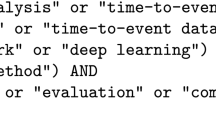Abstract
In survival analysis, frailty models are potential choices for modeling unexplained heterogeneity in a population, which exists due to missing covariate information or to differential survival patterns among members of a population. Typically, in these models, the frailty term, which is a random effect, is unconditional on the observed covariates. In our model, we allow the frailty effect to be modulated by the observed covariates. In this way, the frailty effect is no longer rendered separate from the covariates, allowing the model to capture the frailty effect as function of unobserved as well as observed information. We demonstrate this model on a set of subjects in the Framingham Heart Study who had atrial fibrillation events and who were followed forward in time for the development of stroke. As assessed via performance measures, our model performs better on this data than the other models considered. It also captures unique hazard configurations not produced by the other models.
Similar content being viewed by others
References
Anderson, K.M., 1991. A nonproportional hazards Weibull accelerated failure time regression model. Biometrics 47. 281–288.
Allen D.M., 1974. The relationship between variable selection and data augmentation and a method for prediction. Technometrics 16(1), 125–127.
Barker, P., Henderson, R., 2005. Small sample bias in the gamma frailty model for univariate survival. Lifetime Data Analysis 11, 265–284.
Carlin, B.P., Louis, T.A., 1996. Bayes and Empirical Bayes Methods for Data Analysis, Chapman & Hall, London.
Chen, M.H., Ibrahim, J.G., Sinha D., 2002. Bayesian inference for multivariate survival data with a cure fraction. Journal of Multivariate Analysis 80(1), 101–126.
Cui S., Sun Y., 2004. Checking for the gamma frailty distribution under the marginal proportional hazards frailty model. Statistica Sinica 14, 249–267.
D‘Agostino, R.B., Nam, B-H., 2004. Evaluation of the performance of survival analysis models: Discrimination and calibration measures. In Balakrishnan, N. and Rao, C.R.(eds.), Handbook of Statistics 23: Advances in survival analysis, Elsevier, North Holland, 1–25.
Dawber, T.R., Meadors, G.F., Moore, F.E.J., 1951. Epidemiological approaches to heart disease: the Framingham Study. American Journal of Public Health 41, 279–286.
Dellaportas, P., Smith, A.F.M., 1993. Bayesian inference for generalized linear and proportional hazards models via Gibbs sampling. Applied Statistics 42, 443–59.
Fine, J.P., Kosorok, M.R., Lee, B.L., 2004. Robust inference for univariate proportional hazards frailty regression models. Annals of Statistics 32(4), 1448–1491.
Gilks, W.R., Richardson S., Spiegelhalter, D.J., 1996. Markov chain Monte Carlo in practice, Chapman & Hall/CRC, Boca Raton.
Govindarajulu, U.S., Sullivan, L., D‘Agostino, Sr. R.B., 2004. SAS macros for confidence interval estimation for CHD risk prediction by different survival models. Computational Data Analysis and Statistics 46(3), 571–592.
Heckman, J.J., Singer, B., 1984. A method for minimizing the impact of distributional assumptions in econometric models of duration data. Econometrics 52, 271–320.
Hougaard, P., 1984. Life table methods for heterogeneous populations: distributions describing the heterogeneity. Biometrika 71(1), 75–83.
Hougaard, P., 1995. Frailty models for survival data. Lifetime Data Analysis 1, 255–273.
Jones, G., 2004. Markov Chain Monte Carlo methods for inference in frailty models with doubly-censored data. Journal of data science 2, 33–47.
Keiding, N., Andersen, P.K., Klein, J.P., 1997. The role of frailty models and accelerated failure time models in describing heterogeneity due to omitted covariates. Statistics in Medicine 16, 215–224.
Klein, J.P., Moeschberger, M.L., 1997. Survival analysis: Techniques for censored and truncated data. Springer, New York.
Lancaster, T., 1979. Econometric methods for the duration of unemployment. Econometrica 47(4), 939–956.
Lehmann, E.L., Casella, G., 1998. Theory of point estimation. Springer-Verlag, New York.
Pickles, A., Crouchley, R., 1995. A comparison of frailty models for multivariate survival data. Statistics in Medicine 14, 1447–1461.
SAS, Version 8.2, Copyright © 1999 by SAS Institute Inc., Cary, NC, USA.
Smith, A.F.M., Gelfand, A. E., 1992. Bayesian statistics without tears: A sampling-resampling perspective. The American Statistician 46, 84–88.
Spiegelhalter, D.J., Thomas, A., Best, N.G., 2003. WinBugs Version 1.4 User Manual, MRC Biostatistics Unit., Cambridge, UK.
Stone, M., 1974. Cross-validatory choice and assessment of statistical predictions. Journal of the Royal Statistical Society. Series B (Methodological) 36(2), 111–147.
Vaupel, J.W., Manton, K.G., Stallard, E., 1979. The impact of heterogeneity in individual frailty on the dynamics of mortality. Demography 16(3), 439–454.
Wassell, J.T., Moeschberger, M.L., 1993. A bivariate survival model with modified gamma frailty for assessing the impact of interventions, Statistics in Medicine 12, 241–248.
Wienke A., 2003. Frailty Models. MPIDR Working Paper WP 2003-032. https://doi.org/www.demogr.mpg.de.
Wolf, P.A., Abbott, R.D., Kannel, W.B., 1987. Atrial fibrillation: a major contributor to stroke in the elderly. The Framingham Study. Archives of Internal Medicine 147(9), 1561–4.
Wolf, P.A., Dawber T.R., Thomas, H.E.J., and Kannel, W.B. (1978). Epidemiologic assessment of chronic atrial fibrillation and risk of stroke: the Framingham Study. Neurology 28, 973–977.
Author information
Authors and Affiliations
Corresponding author
Rights and permissions
About this article
Cite this article
Govindarajulu, U.S., Glickman, M.E. & D’Agostino, R.B. Modeling Frailty as a Function of Observed Covariates. J Stat Theory Pract 1, 117–135 (2007). https://doi.org/10.1080/15598608.2007.10411828
Received:
Revised:
Published:
Issue Date:
DOI: https://doi.org/10.1080/15598608.2007.10411828




